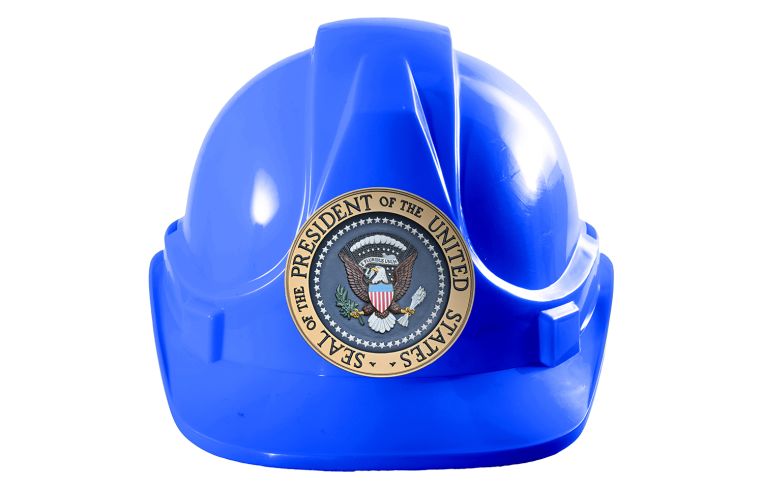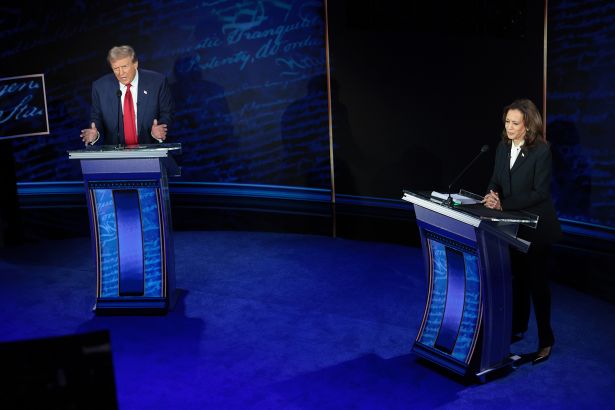On Housing Construction, Kamala Harris and Donald Trump Diverge Dramatically
The candidates do agree that millions of more homes are needed — one has even put a number on it
By Aaron Short September 13, 2024 11:17 am
reprints
Housing affordability hasn’t been a top issue in a presidential campaign for decades, but the nation’s lack of homes has gotten so alarming it was raised at the candidates’ debate Sept. 10.
In her opening statement that night, Vice President Kamala Harris trumpeted that she was a “middle-class kid” who understood that the dreams and ambitions of Americans depend on having an affordable place for their families to live.
“I am actually the only person on this stage who has a plan that is about lifting up the middle-class and working people of America,” Harris said at the National Constitution Center in Philadelphia. “We know that we have a shortage of homes and housing, and the cost of housing is too expensive for far too many people. We know that young families need support to raise their children.”
Former President Donald Trump responded by asserting that inflation under President Joe Biden was a “disaster” and the economy was in better shape during his term in office until the pandemic struck.
“Everybody knows what I’m going to do. Cut taxes very substantially. And create a great economy like I did before,” Trump said.
Both candidates are smart to speak to anxieties over housing, which has emerged as a key priority for voters.
The cost of owning or renting a home was the second most important financial problem facing families behind the cost of living, due to inflation, according to a Gallup survey conducted in April. When inflation cooled over the summer, voters cited the economy as the issue they cared most about, while inflation/cost of living tied for fourth, in a September New York Times/Siena College poll. Federal figures that came out the day after the presidential debate showed that housing costs were still the major factor driving inflation, despite a decline in the rate of increase to a level last seen in early 2021.
“It’s becoming an issue in swing states, that’s the issue,” said Jordan Barowitz, principal at Barowitz Advisory. “It was perceived as an urban problem for a long time but now it’s becoming a national problem. There’s a shortage of housing nationwide, and that’s how things make their way into presidential politics.”

It hasn’t helped that the supply of homes on the market has continued to shrink. In 2022, the nation’s housing shortage rose to 4.5 million homes from 4.3 million the previous year, according to a Zillow analysis. During that same period, the number of families rose by 1.8 million while only 1.4 million new homes were built, which meant that the nation was not keeping pace with the demand of new families searching on the market, let alone those who have been looking to move for much of the past decade.
The lack of homes has had long-term consequences for Americans, especially young people, who can’t afford to buy a place or even rent an affordable apartment. A recent NBC poll of Gen Z voters found that 84 percent said home ownership was harder for them than it was for their parents’ generation. Student loan and credit card debt has loomed large, as 38 percent of those polled said their debts prevented them from purchasing a home, and 32 percent said debt kept them from moving out of their parents’ house.
“They can’t afford homes, they can’t afford mortgages, the danger to creating wealth in this society is a real one,” political consultant Hank Sheinkopf said. “If you don’t have a home or property, you can’t transfer any wealth to the next generation, and you’re not going to have families or raise children. What will America look like in the future? It will be a disaster.”
Harris and Trump have each proposed different ways of tackling the problem of too few homes on the market.
Harris pledged to build 3 million housing units over the next four years, on top of the 1.1 million homes that the construction industry is estimated to build annually in the coming years.
To jump-start that development, the Harris campaign proposed a new tax incentive for home builders and a $40 billion fund to encourage local governments to support construction financing programs, remove regulations that discourage residential development, and make it easier for developers to secure building permits.
Jim Tobin, CEO of the National Association of Home Builders, said that Harris’s plan for 3 million homes, or roughly 750,000 per year, would be at a pace not seen since the early 2000s.
“In order to do that, we’re going to solve the labor crisis, we need to solve the regulatory burdens, and we need to make more land available because there are a lot of headwinds toward accomplishing that goal,” Tobin said. “As we ramp up production we’re going to need more people to approve plans and zoning, so there may be ways of using technology to create a faster system for building approvals and thereby lower costs.”
Trump meanwhile promised in a July interview with Bloomberg to dismantle excessive zoning regulations, building permits and environmental reviews that contribute to rising housing costs.
And both candidates’ platforms state they would seek to repurpose certain federal lands for affordable housing development, although neither specified which tracts would be developed.
The most effective federal ways of boosting the housing supply is by providing incentives to make local zoning less restrictive, making permitting and approval processes more efficient, and investing in transportation infrastructure, housing experts say.
“None of these are quick fixes with immediate returns in the political arena, but the temptation to pursue policies that bolster demand before we address the fundamental supply issues are likely to be counterproductive, bidding prices up and exacerbating affordability challenges,” Sam Chandan, director of the Chen Institute for Global Real Estate Finance at the NYU Stern School of Business, said.
Boosting the nation’s housing stock will lower costs eventually, but that doesn’t help those currently searching for a place to live. Consequently, both candidates have released tax proposals aimed at helping families afford a new home sooner rather than later.
Harris offered to provide as many as 4 million first-time homebuyers with up to $25,000 to contribute to their down payments as long as they’ve paid rent on time for two years, and she has proposed expanding the Low-Income Housing Tax Credit, which developers can use to create affordable housing. (Details about the down payments program, such as whether buyers in states with higher home prices would be eligible for more generous assistance, have yet to be released.)
The vice president hasn’t ignored renters, either. She embraced capping rents, mirroring a Biden administration proposal that would force corporate landlords who own more than 50 units to limit rent increases to 5 percent over the next two years or risk losing any federal tax breaks.
But rent caps would be unpopular with property owners and contractors. Tobin said his members would oppose rent restrictions and preferred that Harris talk about lowering federal regulatory barriers to home construction, something the White House can already control.
Restrictive regulation is “a disincentive to develop more housing,” he said. “There won’t be more investment or maintenance in those properties, especially with insurance bills that have gotten out of control.”
Trump also wants to promote homeownership by extending new tax incentives for first-time homebuyers but has focused on reducing housing costs by pledging to reduce mortgage rates and cut inflation. (The Federal Reserve, which is responsible for setting interest rates that can influence mortgage rates, is expected to cut rates this month by 25 basis points.) Trump has also vowed to divert any housing spending for undocumented immigrants toward shelter for homeless veterans.
To create more housing, the country also needs enough skilled workers to build it. But the Trump campaign platform would shrink a critical source of labor when work is desperately needed. The construction industry has for years now grappled with a shortage of several hundred thousand workers, and part of the solution to that shortage is training immigrants.
Tobin wants the federal government to establish visa and employment verification systems to ensure that workers are eligible to work in the construction industry legally.
“What we should be talking about is the economic benefits of comprehensive immigration reform, which starts with a secure border,” he said. “We know the immigration system in this country is broken, but I believe there’s a middle group of lawmakers and stakeholders that wants to see immigration happen.”
Instead, Trump has proposed mass deportations of millions of undocumented workers. At the debate, he continued to blame immigrant workers for stealing jobs from Americans while contributing to rising costs of living and higher crime rates.
But industry observers say deportations would further decimate the construction labor pool, upend the housing market, and disrupt the American economy in calamitous ways.
“One of the major challenges with the Trump platform is the impact of proposed immigration and trade policies on the supply of skilled construction labor and the cost of materials,” Chandan said. “It’s unclear that mass deportations will impact rental housing demand materially. Our ability to bring all types of new housing online could be severely impinged by an abrupt shift in broad labor market dynamics and access to important construction materials.”


